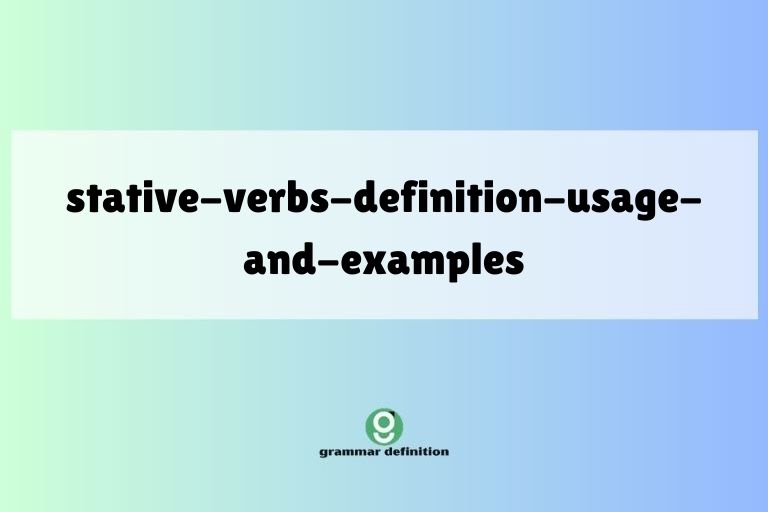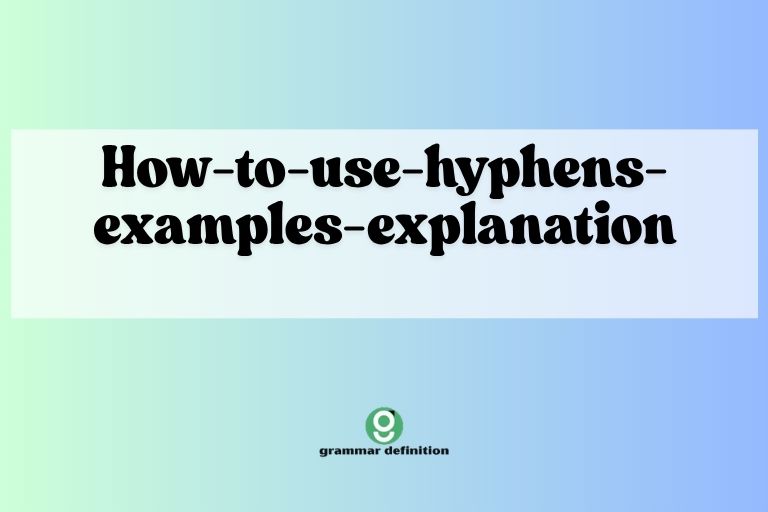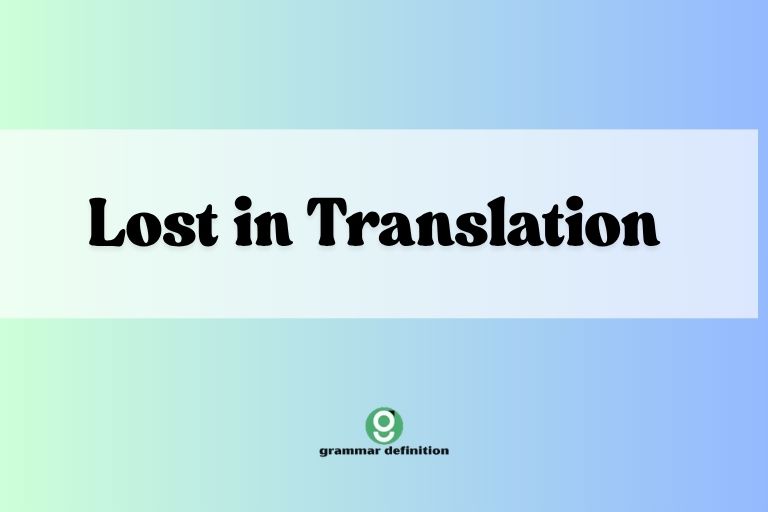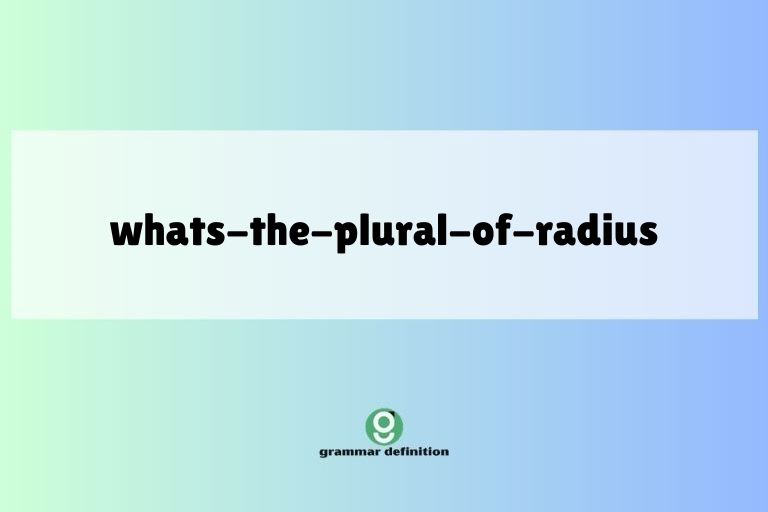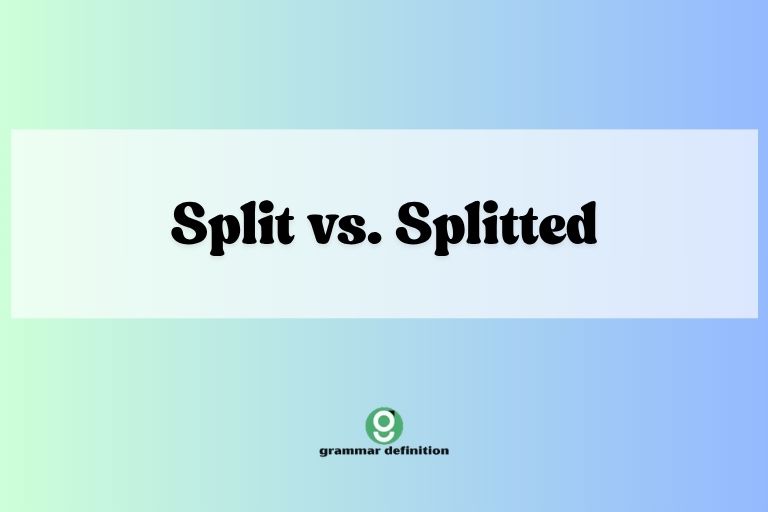Countable Nouns: Definition, Usage, and Examples
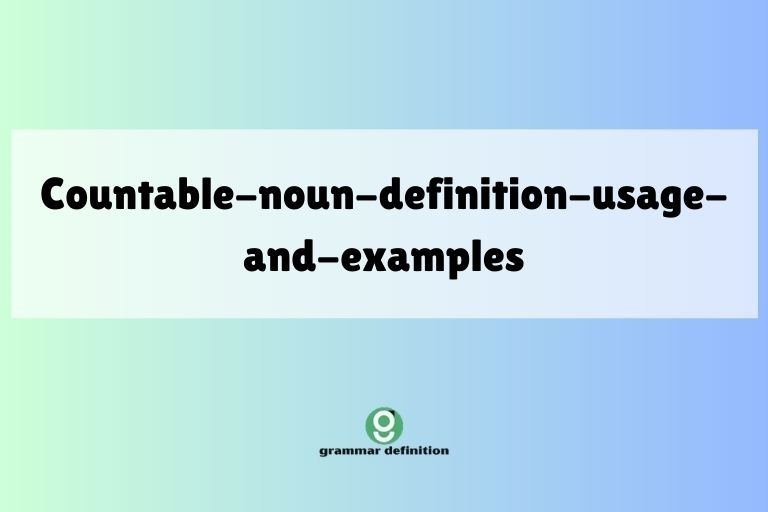
Understanding countable nouns is fundamental to mastering English grammar. Countable nouns are those that can be counted, either in singular or plural form.
This understanding impacts sentence construction, verb agreement, and the proper use of articles and quantifiers. This comprehensive guide is designed for English language learners of all levels, from beginners seeking to grasp the basics to advanced speakers aiming to refine their grammar skills.
Whether you are preparing for an English proficiency exam or simply wish to communicate more effectively, a solid grasp of countable nouns is essential.
This article provides a detailed exploration of countable nouns, covering their definition, structural patterns, variations, usage rules, common mistakes, and advanced applications. Through numerous examples, practice exercises, and frequently asked questions, you will gain the knowledge and confidence to use countable nouns correctly and naturally in your everyday communication.
Table of Contents
- Definition of Countable Nouns
- Structural Breakdown of Countable Nouns
- Types and Categories of Countable Nouns
- Examples of Countable Nouns
- Usage Rules for Countable Nouns
- Common Mistakes with Countable Nouns
- Practice Exercises
- Advanced Topics
- Frequently Asked Questions (FAQ)
- Conclusion
Definition of Countable Nouns
Countable nouns, also known as count nouns, are nouns that can be counted and have both singular and plural forms. This distinguishing feature allows us to use numbers and certain quantifiers (like a, an, one, two, many, few, several) with them. They represent tangible objects, people, places, or ideas that can be individually identified and enumerated.
In contrast to uncountable nouns (mass nouns), which represent substances, concepts, or collections that cannot be easily divided into individual units, countable nouns have distinct singular and plural forms. For example, “book” is a countable noun (one book, two books), while “water” is an uncountable noun (we cannot say “one water,” but rather “one bottle of water”).
The ability to quantify countable nouns directly affects the grammatical structures we use with them, including article usage and verb agreement.
Countable nouns play a crucial role in expressing quantity and specificity. They allow us to communicate precise information about the number of items or entities we are referring to.
For instance, saying “I have three apples” conveys more specific information than saying “I have some fruit,” where “fruit” is uncountable in a general sense.
Structural Breakdown of Countable Nouns
The structural breakdown of countable nouns involves understanding their singular and plural forms, as well as the rules for forming plurals. Most countable nouns form their plural by adding “-s” to the singular form.
However, there are several exceptions and irregular forms that must be learned.
Regular Plural Forms
The most common way to form the plural of a countable noun is by adding “-s” to the end of the word. Here are some examples:
- Singular: book, Plural: books
- Singular: chair, Plural: chairs
- Singular: table, Plural: tables
- Singular: car, Plural: cars
- Singular: house, Plural: houses
Irregular Plural Forms
Some countable nouns have irregular plural forms that do not follow the standard “-s” rule. These forms often derive from older linguistic patterns and must be memorized.
Below are some common irregular plural forms:
- Singular: man, Plural: men
- Singular: woman, Plural: women
- Singular: child, Plural: children
- Singular: tooth, Plural: teeth
- Singular: foot, Plural: feet
- Singular: mouse, Plural: mice
- Singular: goose, Plural: geese
- Singular: ox, Plural: oxen
Nouns Ending in -s, -ss, -sh, -ch, -x, or -z
For nouns ending in -s, -ss, -sh, -ch, -x, or -z, the plural is usually formed by adding “-es”. This helps to maintain pronunciation clarity.
- Singular: bus, Plural: buses
- Singular: glass, Plural: glasses
- Singular: dish, Plural: dishes
- Singular: watch, Plural: watches
- Singular: box, Plural: boxes
- Singular: quiz, Plural: quizzes
Nouns Ending in -y
For nouns ending in “-y” preceded by a consonant, the “-y” is usually changed to “-i” and “-es” is added to form the plural. If the “-y” is preceded by a vowel, simply add “-s”.
- Singular: city, Plural: cities
- Singular: baby, Plural: babies
- Singular: story, Plural: stories
- Singular: toy, Plural: toys
- Singular: boy, Plural: boys
- Singular: day, Plural: days
Nouns Ending in -f or -fe
For some nouns ending in “-f” or “-fe”, the “-f” is changed to “-v” and “-es” is added to form the plural. However, some nouns simply add “-s”.
- Singular: leaf, Plural: leaves
- Singular: wife, Plural: wives
- Singular: knife, Plural: knives
- Singular: roof, Plural: roofs
- Singular: cliff, Plural: cliffs
Nouns with the Same Singular and Plural Form
Some nouns have the same form in both the singular and plural. These are often related to animals or units of measurement.
- Singular: sheep, Plural: sheep
- Singular: fish, Plural: fish
- Singular: deer, Plural: deer
- Singular: aircraft, Plural: aircraft
- Singular: species, Plural: species
Types and Categories of Countable Nouns
Countable nouns can be further categorized based on their semantic meaning and the types of entities they represent. Understanding these categories can help to better grasp the range and versatility of countable nouns in English.
Common Countable Nouns
These are general names for people, places, things, or ideas. They are not capitalized unless they begin a sentence.
- Examples: dog, house, city, friend, book
Proper Countable Nouns
These are specific names for people, places, or things. They are always capitalized.
While they are countable, they often refer to unique entities and therefore don’t always appear in plural form in typical usage.
- Examples: John, Paris, Eiffel Tower, Amazon River
Concrete Countable Nouns
These are tangible objects that can be perceived by the senses (sight, touch, smell, taste, hearing).
- Examples: table, flower, car, phone, apple
Abstract Countable Nouns
These represent ideas, concepts, or qualities that cannot be perceived by the senses. They are countable because you can have multiple instances or types of them.
- Examples: idea, dream, plan, thought, opportunity
Collective Countable Nouns
These refer to a group of individuals or things considered as a single unit. They can be treated as singular or plural depending on whether the focus is on the group as a whole or its individual members.
- Examples: team, family, class, committee, crowd
Examples of Countable Nouns
To illustrate the usage of countable nouns, here are several examples categorized by their type. Each table provides a variety of sentences to demonstrate how countable nouns are used in different contexts.
Common Countable Nouns Examples
The table below shows examples of common countable nouns used in sentences. Note the use of articles (a/an/the) and plural forms.
| Countable Noun | Example Sentence |
|---|---|
| Dog | I saw a dog in the park. |
| House | They live in a beautiful house. |
| City | London is a large city. |
| Friend | She is a good friend. |
| Book | I am reading an interesting book. |
| Car | He drives a fast car. |
| Tree | There are many trees in the forest. |
| Bird | I heard a bird singing. |
| Flower | She picked some flowers from the garden. |
| Child | The children are playing outside. |
| Apple | I ate an apple for lunch. |
| Chair | Please take a chair. |
| Table | The food is on the table. |
| Computer | I need a new computer. |
| Phone | I have two phones. |
| Key | I lost my key. |
| Pen | Can I borrow a pen? |
| Bag | She carries a heavy bag. |
| Coin | I found a coin on the street. |
| Ticket | We bought tickets to the concert. |
| Watch | He wears an expensive watch. |
| Shirt | I need to buy a new shirt. |
| Shoe | My shoes are dirty. |
| Sock | I have a pair of socks. |
| Glove | I lost my gloves. |
Abstract Countable Nouns Examples
Abstract countable nouns represent ideas, concepts, or qualities. The following table illustrates their usage:
| Countable Noun | Example Sentence |
|---|---|
| Idea | That’s a great idea! |
| Dream | I had a strange dream last night. |
| Plan | We have several plans for the weekend. |
| Thought | That’s an interesting thought. |
| Opportunity | This is a great opportunity. |
| Problem | We have many problems to solve. |
| Question | I have a question for you. |
| Answer | The teacher gave the answer. |
| Reason | There are many reasons to be happy. |
| Excuse | He made up an excuse for being late. |
| Experience | Traveling is a great experience. |
| Feeling | I have a bad feeling about this. |
| Memory | I have many good memories of my childhood. |
| Hope | I have a lot of hope for the future. |
| Wish | I have a wish for you. |
| Goal | I have several goals I want to achieve. |
| Challenge | This is a difficult challenge. |
| Effort | We need to make more effort. |
| Attempt | He made several attempts to fix it. |
| Mistake | Everyone makes mistakes. |
| Decision | I made a difficult decision. |
| Choice | You have many choices. |
| Lesson | I learned a valuable lesson. |
| Event | This is an important event. |
| Meeting | We have a meeting tomorrow. |
Collective Countable Nouns Examples
Collective nouns refer to a group of things or people. They can be singular or plural depending on the context.
| Countable Noun | Example Sentence (Singular) | Example Sentence (Plural) |
|---|---|---|
| Team | The team is playing well. | The team are arguing about the strategy. |
| Family | My family is very supportive. | My family are all arriving at different times. |
| Class | The class is learning about grammar. | The class are working on their individual projects. |
| Committee | The committee has made a decision. | The committee have different opinions. |
| Crowd | The crowd is cheering loudly. | The crowd are dispersing after the game. |
| Audience | The audience was very attentive. | The audience were clapping enthusiastically. |
| Government | The government is implementing new policies. | The government are divided on the issue. |
| Company | The company is expanding its operations. | The company are negotiating new contracts. |
| Group | The group is working together. | The group have different backgrounds. |
| Board | The board has approved the proposal. | The board are discussing the details. |
| Staff | The staff is dedicated to their work. | The staff are taking a break. |
| Crew | The crew is preparing the ship. | The crew are responsible for different tasks. |
| Band | The band is playing live music. | The band are practicing for their concert. |
| Choir | The choir is singing beautifully. | The choir are rehearsing for the performance. |
| Army | The army is well-trained. | The army are deployed in different locations. |
| Navy | The navy is protecting the coast. | The navy are conducting exercises. |
| Police | The police is investigating the crime. | The police are patrolling the streets. |
| Jury | The jury has reached a verdict. | The jury are deliberating the evidence. |
| Orchestra | The orchestra is playing a symphony. | The orchestra are tuning their instruments. |
| Public | The public is concerned about the issue. | The public are expressing their opinions. |
Usage Rules for Countable Nouns
Using countable nouns correctly involves understanding specific rules regarding articles, quantifiers, and verb agreement. These rules ensure clarity and grammatical accuracy in your writing and speech.
Article Usage
Countable nouns require the use of articles (a, an, the) or other determiners (e.g., my, his, this, that) when they are singular. The indefinite articles “a” and “an” are used when referring to a non-specific or newly introduced noun. “A” is used before words that begin with a consonant sound, while “an” is used before words that begin with a vowel sound.
- I saw a dog in the park.
- She ate an apple.
The definite article “the” is used when referring to a specific noun that has already been mentioned or is known to the listener or reader.
- The book on the table is mine.
- I went to the store yesterday.
Quantifiers
Countable nouns can be used with quantifiers that indicate quantity. Some common quantifiers for countable nouns include:
- Many: I have many books.
- Few: I have few friends.
- Several: I have several ideas.
- A few: I have a few coins.
- A number of: There are a number of reasons.
Verb Agreement
The verb used with a countable noun must agree in number. Singular countable nouns take singular verbs, while plural countable nouns take plural verbs.
- Singular: The dog is barking.
- Plural: The dogs are barking.
Using “Some” and “Any”
Some is typically used in affirmative sentences to indicate an unspecified quantity of countable nouns.
- I have some apples.
- There are some chairs in the room.
Any is typically used in questions and negative sentences.
- Do you have any questions?
- I don’t have any pens.
Common Mistakes with Countable Nouns
Several common mistakes can occur when using countable nouns, especially for English language learners. Recognizing and correcting these errors is crucial for improving grammatical accuracy.
Incorrect Use of Articles
A common mistake is omitting articles or using the wrong article with singular countable nouns.
Incorrect: I saw dog in the park.
Correct: I saw a dog in the park.
Incorrect: She is reading book.
Correct: She is reading a book.
Using Uncountable Nouns as Countable
Another mistake is treating uncountable nouns as countable by adding “-s” or using them with “a/an.”
Incorrect: I need to buy furnitures.
Correct: I need to buy furniture.
Incorrect: Can I have a water?
Correct: Can I have some water?
Incorrect Verb Agreement
Failing to match the verb form with the singular or plural form of the noun is another common error.
Incorrect: The books is on the table.
Correct: The books are on the table.
Incorrect: The child are playing.
Correct: The child is playing.
Misusing Quantifiers
Using quantifiers incorrectly, such as using “much” with countable nouns, is a frequent mistake.
Incorrect: I have much books.
Correct: I have many books.
Incorrect: How many water do you need?
Correct: How much water do you need?
Confusion with Collective Nouns
Collective nouns can be tricky because they can be singular or plural depending on the context. Using the wrong verb form is a common mistake.
Incorrect: The team are winning the game (when referring to the team as a unit).
Correct: The team is winning the game.
Incorrect: The family is disagreeing (when emphasizing individual members).
Correct: The family are disagreeing.
Practice Exercises
Test your understanding of countable nouns with these practice exercises. Each exercise focuses on different aspects of countable noun usage, including article usage, plural formation, and quantifier selection.
Exercise 1: Article Usage
Fill in the blanks with the correct article (a, an, the) or leave the blank empty if no article is needed.
| Question | Answer |
|---|---|
| 1. I saw ______ cat in the garden. | a |
| 2. She is reading ______ interesting book. | an |
| 3. ______ sun is shining brightly today. | The |
| 4. He wants to buy ______ car. | a |
| 5. They live in ______ big house. | a |
| 6. I need ______ umbrella. | an |
| 7. ______ Eiffel Tower is in Paris. | The |
| 8. She is ______ doctor. | a |
| 9. We went to ______ beach yesterday. | the |
| 10. He is ______ honest man. | an |
Exercise 2: Plural Formation
Write the plural form of each noun.
| Singular Noun | Plural Noun |
|---|---|
| 1. Book | books |
| 2. Child | children |
| 3. Box | boxes |
| 4. City | cities |
| 5. Leaf | leaves |
| 6. Tooth | teeth |
| 7. Bus | buses |
| 8. Knife | knives |
| 9. Woman | women |
| 10. Fish | fish |
Exercise 3: Quantifier Selection
Choose the correct quantifier (many, much, few, little) to fill in the blank.
| Question | Answer |
|---|---|
| 1. I have ______ books to read. | many |
| 2. She has ______ time to relax. | little |
| 3. There are ______ people at the party. | many |
| 4. He has ______ money left. | little |
| 5. We have ______ apples in the basket. | many |
| 6. They have ______ experience in this field. | little |
| 7. I have ______ friends. | few |
| 8. She has ______ patience. | little |
| 9. There are ______ cars on the road. | many |
| 10. He has ______ hope of success. | little |
Exercise 4: Correct the Sentence
Identify and correct the errors in the following sentences related to countable nouns.
| Incorrect Sentence | Corrected Sentence |
|---|---|
| 1. I saw dog in the park. | I saw a dog in the park. |
| 2. She has much books. | She has many books. |
| 3. The child are playing. | The child is playing. |
| 4. I need a water. | I need some water. |
| 5. The books is on the table. | The books are on the table. |
| 6. They have few money. | They have little money. |
| 7. I ate apple for lunch. | I ate an apple for lunch. |
| 8. He bought furnitures. | He bought furniture. |
| 9. She is reading a interesting book. | She is reading an interesting book. |
| 10. There is many people here. | There are many people here. |
Advanced Topics
For advanced learners, understanding the nuances of countable noun usage in complex grammatical structures and idiomatic expressions can further refine their English proficiency.
Countable Nouns in Conditional Sentences
Countable nouns are used in conditional sentences to express hypothetical situations. The choice of verb tense and article usage remains crucial.
- If I had a million dollars, I would travel the world.
- If you need any help, please let me know.
Countable Nouns in Relative Clauses
Relative clauses provide additional information about countable nouns. The relative pronouns (who, which, that) must be used correctly.
- The book that I borrowed from you is very interesting.
- The man who helped me was very kind.
Countable Nouns in Idiomatic Expressions
Many idiomatic expressions involve countable nouns. Understanding these expressions requires familiarity with their specific meanings.
- To have a bee in one’s bonnet: To be preoccupied with an idea.
- To take a rain check: To postpone an invitation.
Distinguishing Between Collective and Plural Nouns
A deeper understanding involves recognizing when a collective noun should be treated as singular or plural based on the context. This often depends on whether the emphasis is on the group as a whole or its individual members.
- The team is united in its goal (singular).
- The team are expressing their individual opinions (plural).
Frequently Asked Questions (FAQ)
Here are some frequently asked questions about countable nouns, along with detailed answers to clarify common points of confusion.
- What is the difference between countable and uncountable nouns?
Countable nouns can be counted and have both singular and plural forms (e.g., book, books). Uncountable nouns cannot be counted and usually do not have a plural form (e.g., water, information). We use quantifiers like “many,” “few,” and “several” with countable nouns, and “much,” “little,” and “a lot of” with uncountable nouns.
- How do I know if a noun is countable or uncountable?
A noun is countable if you can put a number in front of it (e.g., one apple, two apples). If you cannot directly count it without using a unit of measurement (e.g., one liter of water, two pieces of information), it is likely uncountable. Also, consider whether the noun has a commonly used plural form.
- Can a noun be both countable and uncountable?
Yes, some nouns can be both countable and uncountable depending on the context. For example, “hair” is usually uncountable when referring to the hair on your head (e.g., “She has long hair”). However, it can be countable when referring to individual strands (e.g., “I found a hair in my soup”).
- Why is it important to learn about countable and uncountable nouns?
Understanding the difference between countable and uncountable nouns is crucial for using correct grammar, including article usage, verb agreement, and quantifier selection. Using these nouns incorrectly can lead to confusion and miscommunication.
- How do I use collective nouns correctly?
Collective nouns can be singular or plural depending on whether you are referring to the group as a whole or its individual members. If the group is acting as a unit, use a singular verb (e.g., “The team is playing well”). If the emphasis is on the individual members, use a plural verb (e.g., “The team are disagreeing about the strategy”).
- What are some common mistakes to avoid with countable nouns?
Common mistakes include omitting articles with singular countable nouns (e.g., “I saw dog” instead of “I saw a dog”), using uncountable nouns as countable (e.g., “furnitures” instead of “furniture”), and using the wrong quantifiers (e.g., “much books” instead of “many books”).
- How can I improve my understanding of countable nouns?
Practice identifying countable and uncountable nouns in sentences. Pay attention to article usage, verb agreement, and quantifier selection. Read widely and listen to native English speakers to observe how they use these nouns in context. Do exercises and quizzes to test your knowledge and identify areas where you need more practice.
- Are proper nouns always countable?
Proper nouns are typically countable, but they often refer to unique entities. While you can have multiple people named “John,” “John” itself remains a proper noun. Plural forms of proper nouns are usually used to refer to multiple instances or members of a group with the same name (e.g., “The Johns in our class are very smart”).
Conclusion
Mastering countable nouns is essential for effective communication in English. Understanding their definition, structural patterns, usage rules, and common mistakes will significantly enhance your grammatical accuracy and fluency.
By practicing the concepts and exercises outlined in this guide, you can confidently use countable nouns in various contexts.
Remember to pay close attention to article usage, verb agreement, and quantifier selection when working with countable nouns. Consistent practice and exposure to the English language will further solidify your understanding and allow you to communicate with greater precision and clarity.
Continue to explore advanced topics and idiomatic expressions to refine your skills and achieve a deeper command of English grammar. With dedication and practice, you can master the intricacies of countable nouns and elevate your overall language proficiency.

